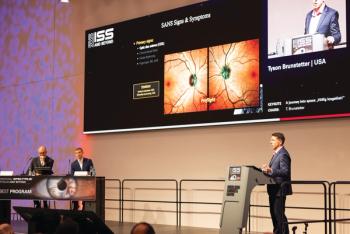
Comparative study on keratitis therapies
Er:YAG laser therapy could be an alternative to steam cautery
Keratitis is a major cause of sight loss in the world but according to Dr Jürgen Kampmeier, current therapies, such as antibiotics, are often not successful in the treatment of this disease.
To combat this problem Dr Kampmeier, professor at the Department of Ophthalmology, University of Ulm, Germany, performed a comparative study of steam cautery and subablative Er:YAG laser therapy in microbial keratitis with the Institute for Lasertechnologies in Medicine and Metrology at the University of Ulm, Germany. The aim of the study was to find an effective and reliable method for the treatment of keratitis that is resistant to microbial therapy (originally presented at the WOC 2010 Congress, Berlin, Germany).
Background and methods
In the comparative study, Dr Kampmeier's team, including Detlef Russ, physicist and the head of application research at the Institute of Lasertechnologies, examined the function and thermic effects of each procedure on fresh enucleated porcine eyes to reproduce conditions similar to that of corneal ulcers in humans. Thermal treatment was applied to the eyes and the measurement of the temperature was performed using an infrared, ultrafast thermal imaging system that is based on radiometry (CMT 256 M HS, Thermosensorik). The temperature required in the study was 60 °C or higher so that it is high enough to kill germs associated with keratitis.
To perform steam cautery, the team heated up the metal thorn to 90 °C using boiling water vapour. Eyes were treated at different contact times of 1, 2 and 3 s and the temperature of the contact surface was measured in dependence of this contact period. For the laser procedure a Burane XL Er:YAG laser of wavelength 2.94 µm was used (WaveLight GmbH, Erlangen, Germany). Treatment with the laser was performed using a single burst and the temperature of the corneal stroma was also measured at several pulse energies. Microscopic photography and histopathological examination were used to analyse the level of thermal injury caused to the eyes by each procedure.
In addition to this simulation was performed using a numeric method that demonstrated the heat distribution and level of tissue damage for each procedure.
Newsletter
Get the essential updates shaping the future of pharma manufacturing and compliance—subscribe today to Pharmaceutical Technology and never miss a breakthrough.












































